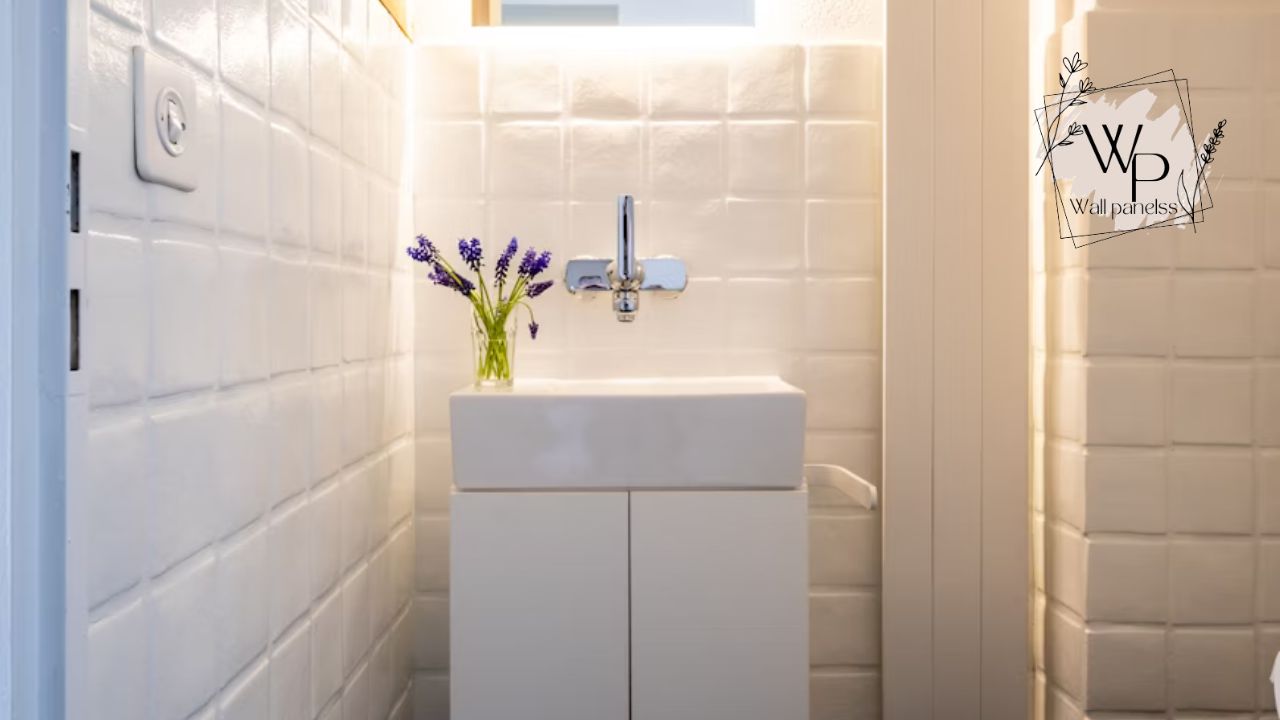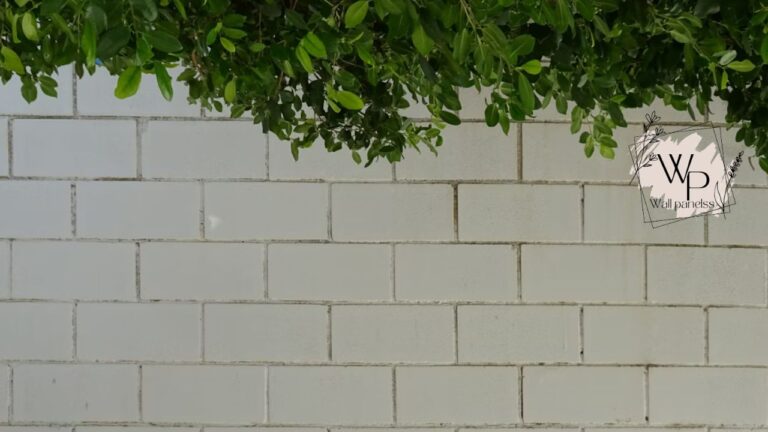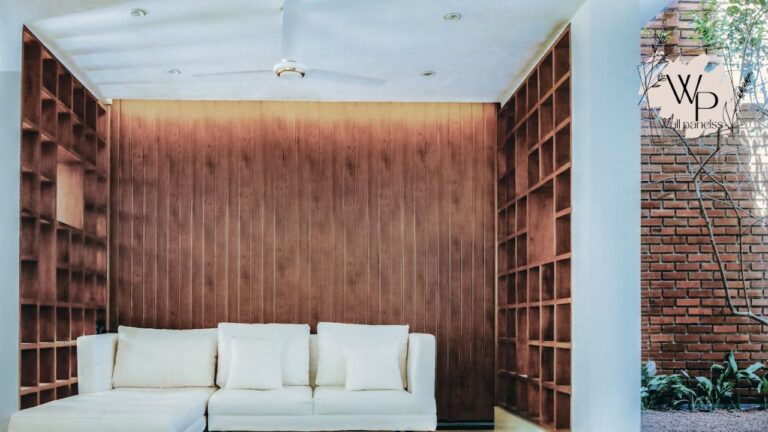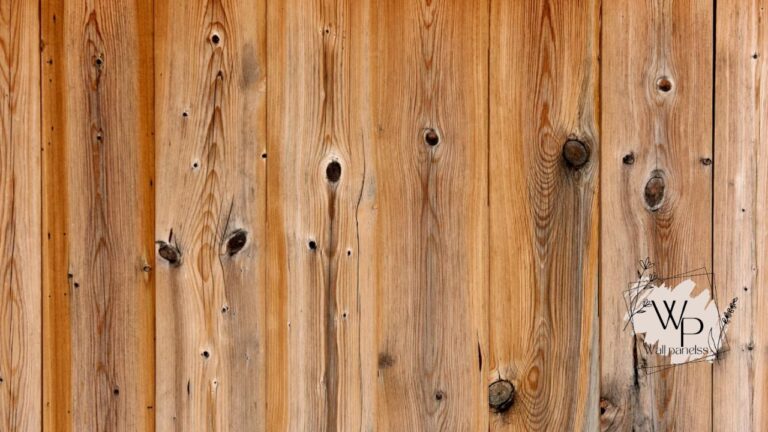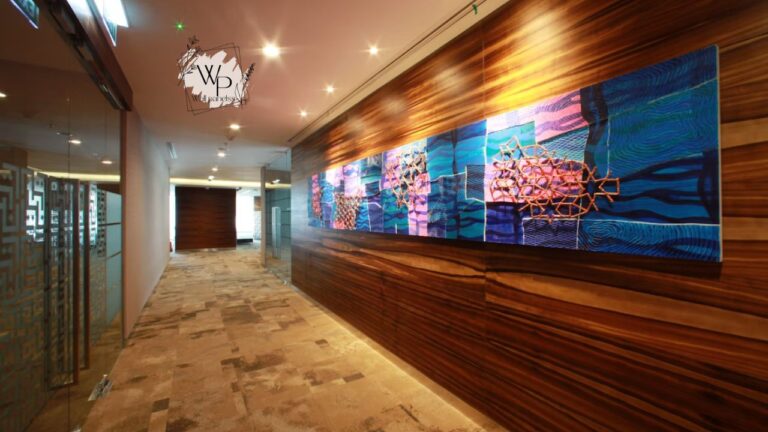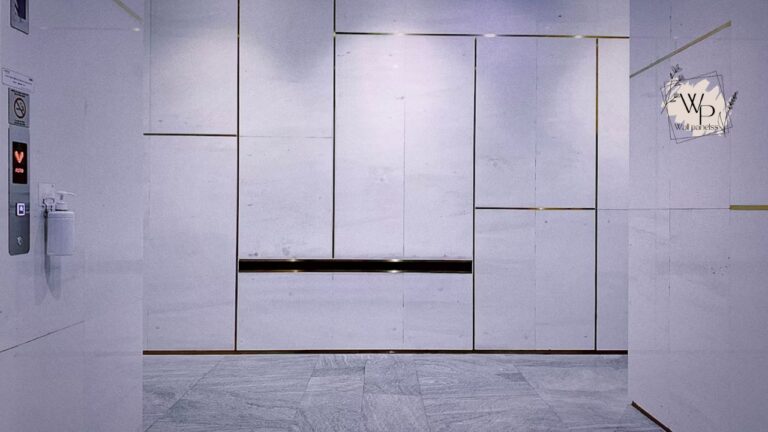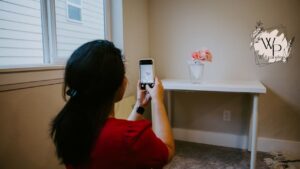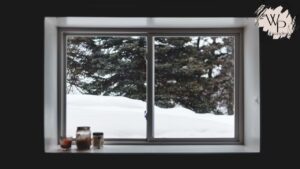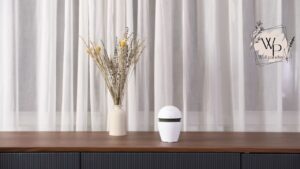Tired of staring at stained grout lines and cracked tiles? It might be time to consider PVC wall panels for bathrooms, an innovative and stylish solution that is completely changing how homeowners approach bathroom renovations. These panels offer a seamless, waterproof, and low-maintenance alternative that can utterly transform your space from drab to fab in a fraction of the time it takes to tile.
This guide is your ultimate resource for understanding everything about this fantastic material. We will dive deep into the pros, cons, costs, and installation, giving you the confidence to decide if PVC wall panels for bathrooms are the right choice for your next project. Forget the endless scrubbing and expensive repairs; a beautiful, modern, and hassle-free bathroom is closer than you think.
PVC Wall Panels at a Glance
Let’s start with a quick overview. This table breaks down the essential details you need to know about using PVC wall panels in your bathroom.
| Feature | Details |
|---|---|
| Material | Polyvinyl Chloride (PVC) – a lightweight, rigid plastic. |
| Primary Benefit | 100% waterproof, making them ideal for wet areas. |
| Cost Range | $8 – $40 per square foot (installed). Varies by brand, thickness, and design. |
| Durability | High. Resistant to mold, mildew, stains, and impacts. |
| Maintenance | Extremely low. Simple wipe-down cleaning with soap and water. |
| Installation | DIY-friendly. Can be installed over existing tiles. No grout required. |
| Design Options | Vast range of colors, textures, and patterns (marble, stone, wood, etc.). |
| Lifespan | Typically 10-25 years, depending on quality and usage. |
Why is Everyone Talking About PVC Wall Panels?
The buzz around PVC wall panels for bathrooms is not without reason. For decades, ceramic and porcelain tiles were the undisputed champions of bathroom walls. However, they come with a significant downside: grout. Grout is porous, prone to staining, and a breeding ground for mold and mildew, demanding constant, back-breaking maintenance.
Enter PVC panels. These large-format sheets create a smooth, continuous surface with no grout lines. The result is not only a sleek and modern aesthetic but also an incredibly hygienic and easy-to-clean environment. This single benefit is a game-changer for busy families, landlords, and anyone who simply wants to spend less time cleaning and more time enjoying their home.
One user, Sarah from Manchester, shared her experience online: “I was skeptical at first, but installing PVC wall panels for our bathroom was the best decision we made. Our old tiles were a nightmare of moldy grout. Now, it takes me two minutes to wipe down the entire shower. It looks brand new every day. Rating: 5/5 stars!”
The Waterproofing Wonder
The core strength of PVC wall panels for bathrooms lies in their composition. PVC is inherently non-porous. Unlike tiles and grout, which can eventually allow moisture to seep through to the wall behind, these panels form a complete, impenetrable barrier against water.
This is especially crucial in high-moisture zones like shower enclosures and around bathtubs. A properly installed PVC panel system protects your home’s structural integrity by preventing water damage, rot, and the devastating long-term problems that can arise from hidden leaks. The peace of mind this provides is truly priceless.
The Pros and Cons: A Balanced View
No product is perfect, and it’s essential to weigh the good with the bad before making a decision. Let’s explore the advantages and potential drawbacks of choosing PVC wall panels for bathrooms.
The Overwhelming Positives
1. Unbeatable Water Resistance
As we’ve mentioned, this is the star feature. The panels are 100% waterproof, providing total protection for your walls. This makes them a superior choice for creating a tanked, leak-proof wet room or shower area.
2. Incredibly Easy to Clean
Imagine a world with no grout to scrub. With PVC wall panels for bathrooms, that world is yours. A simple wipe with a soft cloth and a mild, non-abrasive cleaner is all it takes to keep them looking pristine. This saves you time, effort, and money on specialized cleaning products.
3. Quick and Simple Installation
Installing tiles is a multi-day process involving adhesives, grout, and sealants—a job often best left to expensive professionals. In stark contrast, PVC panels can often be installed in a single day. They can be cut with basic hand tools and are typically fixed to the wall with adhesive. Many systems are designed to go directly over existing tiles, saving you the messy and laborious task of demolition.
4. A Style for Every Taste
The design possibilities are nearly endless. Modern printing technology allows manufacturers to create panels that convincingly mimic high-end materials like marble, travertine, granite, slate, and even wood. You can also find them in a massive array of solid colors, metallic finishes, and contemporary patterns. This versatility ensures that PVC wall panels for bathrooms can complement any decor scheme, from minimalist to traditional.
5. Cost-Effective Solution
While the initial per-square-foot cost might seem comparable to some mid-range tiles, the overall project cost is often significantly lower. You save a substantial amount on labor, as installation is much faster. Furthermore, you avoid the ongoing costs of re-grouting and deep cleaning associated with tiles.
Potential Drawbacks to Consider
1. Perceived Value
Some people still perceive plastic as a “cheaper” material compared to natural stone or ceramic. While high-quality PVC wall panels for bathrooms look incredibly realistic, they may not add the same resale value to a luxury home as a custom-tiled marble shower. However, for most homeowners, the practical benefits far outweigh this perception.
2. Susceptibility to Scratches
While durable, the surface of a PVC panel can be scratched by sharp objects or abrasive cleaners. It’s important to use soft cloths and non-abrasive cleaning agents. Luckily, minor scratches are often not very noticeable, especially on patterned designs.
3. Heat Sensitivity
PVC can be damaged by extreme heat. This is generally not a concern in a bathroom setting, but you should avoid placing direct heat sources like hair straighteners against the panels. Always check the manufacturer’s specifications regarding heat resistance, especially if installing near hot water pipes.
4. Not an Investment in “Equity”
This is a nuanced point, but it’s worth discussing. When you remodel a kitchen with high-end granite countertops, you are often told you are “investing” in your home’s equity. While PVC wall panels for bathrooms will undoubtedly make your home more attractive and functional, they may not be viewed in the same “equity-building” light by all potential buyers or appraisers, especially in very high-end markets. The “personal net worth” of your home’s finishes is subjective. A clean, modern, mold-free bathroom is a huge selling point, but a materials purist might still prefer stone.
Cost Breakdown: What to Expect
The cost of PVC wall panels for bathrooms can vary widely based on several factors. Let’s break it down to give you a realistic budget estimate.
Factors Influencing the Price
- Thickness and Quality: Thicker panels with a more robust core and protective layer will cost more than thinner, basic options.
- Design and Finish: A simple white gloss panel will be the most affordable. Complex, high-definition prints that mimic marble or stone will be at the higher end of the price spectrum.
- Brand Reputation: Well-known, established brands often charge a premium for their proven quality, warranties, and customer support.
- DIY vs. Professional Installation: Doing it yourself eliminates labor costs, which can range from $300 to $1,000+ for a typical bathroom, depending on your location and the project’s complexity.
Sample Budget Scenarios
Let’s imagine a standard 5′ x 8′ bathroom with an 8′ ceiling height, focusing on a typical three-wall shower alcove (approx. 80 sq. ft. of wall space).
- Budget DIY Project: Using basic, solid-color panels ($8/sq. ft.), your material cost would be around $640. Add another $100 for adhesive, sealant, and trim pieces. Total: ~$740.
- Mid-Range Professional Install: Opting for a popular marble-effect panel ($20/sq. ft.), the materials would cost $1,600. Add $150 for premium sealants and trims. Professional labor might be around $600. Total: ~$2,350.
- High-End Luxury Project: Choosing a premium, textured slate-effect panel from a top-tier brand ($35/sq. ft.) would put material costs at $2,800. With specialized trims and labor for a complex layout, the total could easily exceed $4,000.
Compared to tiling the same space, which could range from $2,000 to $7,000+ when factoring in professional labor and longer installation times, the value proposition of PVC wall panels for bathrooms becomes crystal clear.
Installation Guide: From Old to New
One of the most compelling reasons to choose PVC wall panels for bathrooms is the straightforward installation process. While we always recommend following the specific manufacturer’s instructions, here is a general overview of the steps involved.
Step 1: Preparation is Key
Your walls need to be clean, dry, and relatively flat. You can install panels over existing tiles, plasterboard, or painted walls.
- Over Tiles: Clean the tiles thoroughly to remove any soap scum or grease. The adhesive needs a clean surface to bond to.
- Over Drywall: If the wall is new, it may need priming. If it’s painted, give it a light sanding to scuff up the surface for better adhesion.
- Repair Damage: Fill any major holes or cracks. The panels can bridge minor imperfections, but a sound substrate is always best.
Step 2: Measuring and Cutting
Measure twice, cut once! Carefully measure the height and width of the walls you plan to cover. Transfer these measurements to your PVC panels.
Most panels can be easily cut using a fine-toothed hand saw, a jigsaw, or even a sharp utility knife for thinner panels. Always cut with the decorative side facing up to minimize chipping. Use a straight edge to ensure your cuts are perfectly aligned.
Step 3: Applying Adhesive
Apply a generous amount of a recommended panel adhesive to the back of the panel. A common method is to apply it in a “snake-like” or zigzag pattern, ensuring you also run a bead around the entire perimeter, about an inch from the edge. This creates a solid bond and a peripheral seal.
Step 4: Fitting the Panels
Carefully press the panel onto the wall. Apply firm, even pressure across the entire surface to ensure the adhesive spreads and makes good contact. Most systems use a tongue-and-groove design, where one panel slots neatly into the next, creating a seamless and waterproof joint.
A user on a DIY forum noted: “The tongue-and-groove system was a revelation. The panels just clicked together. I was worried about the seam, but once the sealant is in the joint, it’s completely invisible and watertight. So much easier than spacing tiles!” This is a common sentiment among those who choose PVC wall panels for bathrooms.
Step 5: Sealing and Finishing
This is the most critical step for ensuring a 100% waterproof finish. Apply a high-quality, mold-resistant silicone sealant to all joints, corners, and along the base where the panels meet the shower tray or bathtub.
Finally, install trim pieces around the edges, corners, and ceiling to give the installation a clean, professional look. These trims are specifically designed to work with the panel system and provide another layer of protection. Using the right system is crucial for a durable installation of PVC wall panels for bathrooms.
Top Brands and What They Offer
The market for PVC wall panels for bathrooms has exploded, with numerous brands offering a wide range of products. Here are a few notable names:
- DumaWall: Known for their unique tile-format PVC panels that offer the look of individual tiles without the grout. They feature an interlocking system that is incredibly DIY-friendly.
- Neptune: A popular UK-based brand offering a vast selection of styles, from classic marble to modern high-gloss colors. They provide complete systems including panels, trims, and adhesives.
- Multipanel: A high-end brand focusing on premium, luxurious finishes. Their Hydrolock® tongue-and-groove system creates an almost invisible, waterproof joint. They are a top choice for creating a truly high-end look with PVC wall panels for bathrooms.
- Vox: This brand offers innovative designs, including their “Kerradeco” and “Motivo” lines, which feature realistic textures and 3D effects. They are excellent for creating a stunning feature wall.
When selecting a brand, look at customer reviews, warranty information, and the completeness of their system. A brand that offers perfectly matched trims and recommended sealants takes the guesswork out of the installation.
Real User Reviews and Transformations
The internet is filled with incredible before-and-after photos from homeowners who have embraced PVC wall panels for bathrooms.
John P. from Texas wrote a review: “Our guest bathroom was straight out of the 80s with pink tiles and failing grout. We covered it all with a grey stone effect PVC wall panel system in one weekend. The transformation is jaw-dropping. It looks like a hotel bathroom now, and the cost was less than a third of what we were quoted for a re-tile. Absolutely brilliant product. 5/5 stars.”
Another review from a landlord, Maria K., highlights the practical benefits: “I use PVC wall panels for all my rental property bathrooms now. The durability and low maintenance are a lifesaver. No more calls about moldy grout or cracked tiles. Turnover cleaning is a breeze, and they look great for years. It’s a smart investment.”
These testimonials underscore the powerful combination of aesthetics, practicality, and value that makes PVC wall panels for bathrooms so appealing to a wide range of people. The overwhelmingly positive feedback, with average ratings frequently hitting 4.5 to 5 stars, speaks volumes about user satisfaction.
Caring for Your New PVC Walls
Maintaining your beautiful new bathroom walls is incredibly simple.
- DO: Use a soft microfiber cloth or sponge with warm, soapy water for regular cleaning.
- DO: For tougher soap scum, use a non-abrasive bathroom cleaner. Always rinse the wall with clean water afterward.
- DON’T: Use abrasive scouring pads, steel wool, or harsh chemical cleaners like bleach or acid-based products. These can permanently scratch or discolor the surface.
- DON’T: Allow hair dye, harsh solvents, or nail polish remover to come into contact with the panels.
By following these simple rules, your PVC wall panels for bathrooms will continue to look fantastic for many years, providing a clean, beautiful, and stress-free environment.
The Future of Bathroom Design
As technology improves, we can expect to see even more impressive innovations in the world of PVC wall panels for bathrooms. Think integrated LED lighting, even higher-definition digital printing, and “smart” panels with embedded technology.
The trend is moving away from labor-intensive, high-maintenance materials toward smart, efficient, and beautiful solutions. PVC panels are at the forefront of this movement, offering a glimpse into a future where stunning bathroom design is accessible, affordable, and easy for everyone. Choosing PVC wall panels for bathrooms is not just a renovation choice; it’s an upgrade to a modern, more convenient lifestyle.
The evidence is clear: for a fast, affordable, and dramatic bathroom makeover, there are few products that can compete with the benefits offered by PVC wall panels for bathrooms. They solve the biggest problems associated with traditional materials while opening up a world of design possibilities.
Frequently Asked Questions (FAQs)
Q: Can I really install PVC wall panels directly over my old tiles?
A: Yes, in most cases, you absolutely can! As long as your existing tiles are secure, clean, and relatively flat, you can save a huge amount of time and mess by installing the panels right on top. This is one of the biggest advantages of using PVC wall panels for bathrooms.
Q: Are the panels completely waterproof? What about the seams?
A: The panels themselves are 100% non-porous and waterproof. The key to a waterproof system is correctly sealing the joints. Most panels use a tongue-and-groove system, and you apply a bead of silicone sealant in the joint before clicking them together. When done correctly, the entire system becomes a single, impenetrable waterproof membrane.
Q: Will PVC wall panels look cheap or like plastic?
A: This is a common concern, but modern high-quality panels are remarkably realistic. High-definition printing and textured surfaces create convincing replicas of natural materials like marble, stone, and wood. While entry-level, plain white panels can have a more basic look, the premium designs are often indistinguishable from the real thing at a glance. It’s a fantastic way to get a luxury look without the luxury price tag.
Q: How durable are PVC wall panels for bathrooms? Will they fade?
A: They are very durable. The panels are resistant to impacts, stains, and, most importantly, mold and mildew. The decorative layer is typically protected by a clear, UV-resistant coating, which prevents the colors and patterns from fading over time, even in a sunny bathroom. Most reputable brands offer warranties of 10 years or more.
Q: What is the biggest mistake people make when installing them?
A: The biggest mistake is skimping on the sealing process. Using cheap silicone or not applying it correctly to all joints, corners, and edges can compromise the waterproof integrity of the system. Always use the manufacturer-recommended, high-quality, mold-resistant sealant and be thorough. Proper sealing is what makes PVC wall panels for bathrooms a truly worry-free solution.
Admin Recommendation
WallPanel Home Assistant Idle: The Ultimate Guide to Smart Home Displays

